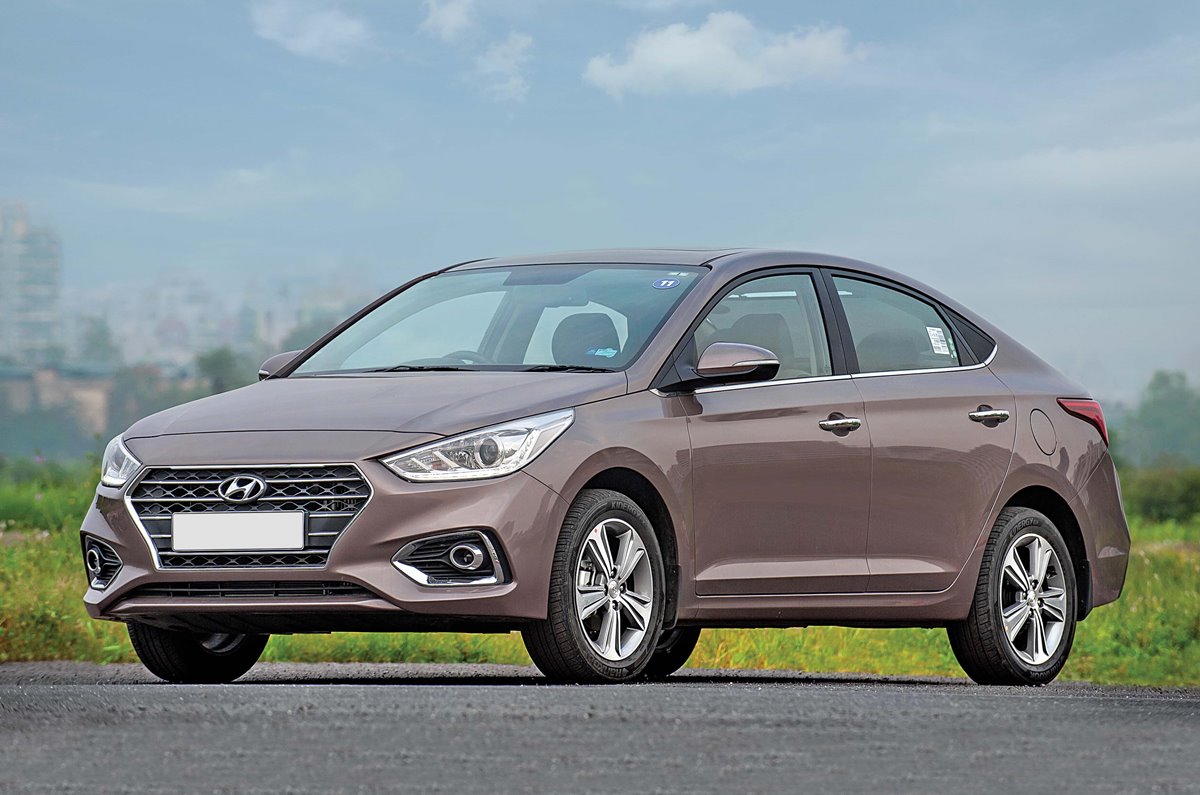Buying Used: (2017-2020) Hyundai Verna

GOOD FOR: Equipment list, smooth engines
LOOK OUT FOR: EPS motor, clutch wear
Stylish, refined and packed to the gills with features, the Hyundai Verna makes for a great pick in the used car market. However, there are some things you should consider before splashing the cash.
Hyundai launched the third-gen Verna in India on August 22, 2017, with prices starting at Rs 7.99 lakh and going up to Rs 12.61 lakh. The Verna got two engine options at launch, a 1.6-litre petrol and diesel. The petrol unit puts out 123hp and 151Nm and the diesel produces 128hp and 260Nm. Both engines can be had with either a 6-speed manual or torque converter automatic gearbox option. Hyundai also introduced a 100hp, 1.4-litre petrol engine to the Verna’s line-up in January 2018.
The Verna 1.6 petrol-manual manages 9.2kpl in town and 13.5kpl on the highway, while the petrol-auto does 8.5kpl in the city and a reasonable 12.3kpl on the highway, on our test cycle. The diesel-automatic manages to return city and highway figures of 13.3kpl and 16.4kpl, respectively. However, it’s the Verna diesel-manual that stands out for its efficiency, returning 14.2kpl in town and 18.5kpl on the highway.
While it was an overall improvement over the outgoing car in many parameters, Hyundai made big improvements with the Verna’s ride and handling. Where the older car used to feel disconnected at highway speeds, the new Verna is far more settled and doesn’t move around as much.
This version of the Hyundai Verna was offered in five trim levels at launch – E, EX, SX, SX+ and SX(O). It’s worth highlighting, however, that the diesel-automatic Verna wasn’t sold in full-spec SX (O) trim for quite some time after launch. Rather, the diesel-auto range topped off in the unique SX+ trim that missed some features.
As standard, the Verna gets ABS, dual front airbags and ISOFIX child seat mounts, while the SX (O) variants see the addition of side and curtain airbags too.
The top-spec Verna SX (O) is packed with features like leatherette seats, a touchscreen with Android Auto and Apple CarPlay, a rear-view camera, cruise control, keyless entry and go, hands-free boot release, automatic climate control and rear AC vents. The Verna was also the first car in its class to offer ventilated front seats. An electric sunroof is onboard and the Verna also gets Hyundai’s Auto Link tech that relays your car’s health and more straight to your smartphone.
Both engine options on the Verna are smooth, powerful enough and reliable, so choosing the right one for you depends on usage. However, we would recommend going for the diesel-automatic Verna as it’s more powerful, faster and more fuel-efficient than the petrol. And although it’s slower to 100kph than the manual, the auto box gives you the convenience of not having to shift gears.
Given that Hyundais are so well equipped, any of the top three trims will make good used buys. However, if you can stretch your budget, go for the SX (O) trim as they get you all the premium kit.
Being a Hyundai, authorised service centres are widely available, with spares and service costs being on par with that of the competition. In fact, our recent maintenance cost study revealed that the Verna is one of the cheapest cars to maintain in the midsize sedan segment, over the course of 60,000km.
Buyer, beware…
EPS motor
Some owners have faced issues with the power steering motor. Check for an EPS warning light in the instrument cluster and if the steering feels too heavy.
Clutch wear
Manual Hyundai Vernas are susceptible to early clutch wear. It’s best to get the clutch and pressure plate inspected before making the purchase.
AC system
Some owners have complained about problems with the AC system, particularly with the compressor unit and the thermistor. Ensure the car’s AC is cooling the cabin quickly and effectively.
Also worth knowing
The Verna doesn’t offer the best rear seat experience due to the low seating position and lack of headroom and kneeroom, compared to its rivals Honda City and Maruti Ciaz. So, it’s not an ideal car to be chauffeur-driven in.
How much to spend
Rs 8-10 lakh
Since it is not a particularly old car, getting a used example for anywhere between Rs 8-10 lakh represents decent value. Hyundai Vernas are not in high demand in the used market so you can haggle to get a better price.
| Hyundai Verna fact file | |
| Years produced | 2017-2020 |
| Price when new | From Rs 7.99 lakh |
| Engine | 4-cyl, 1591cc, petrol/ 4-cyl, 1582cc, turbo-diesel |
| Power | 123/128hp |
| Torque | 151/260Nm |
| Ground clearance | 165mm |
| Boot space | 480 litres |
Also see:
2020 City vs Verna vs Rapid vs Vento vs Ciaz vs Yaris comparison video
Hyundai Creta, Venue top SUV, MPV sales chart in January 2021
Turbocharged petrol cars, SUVs for under Rs 10 lakh



No comments: